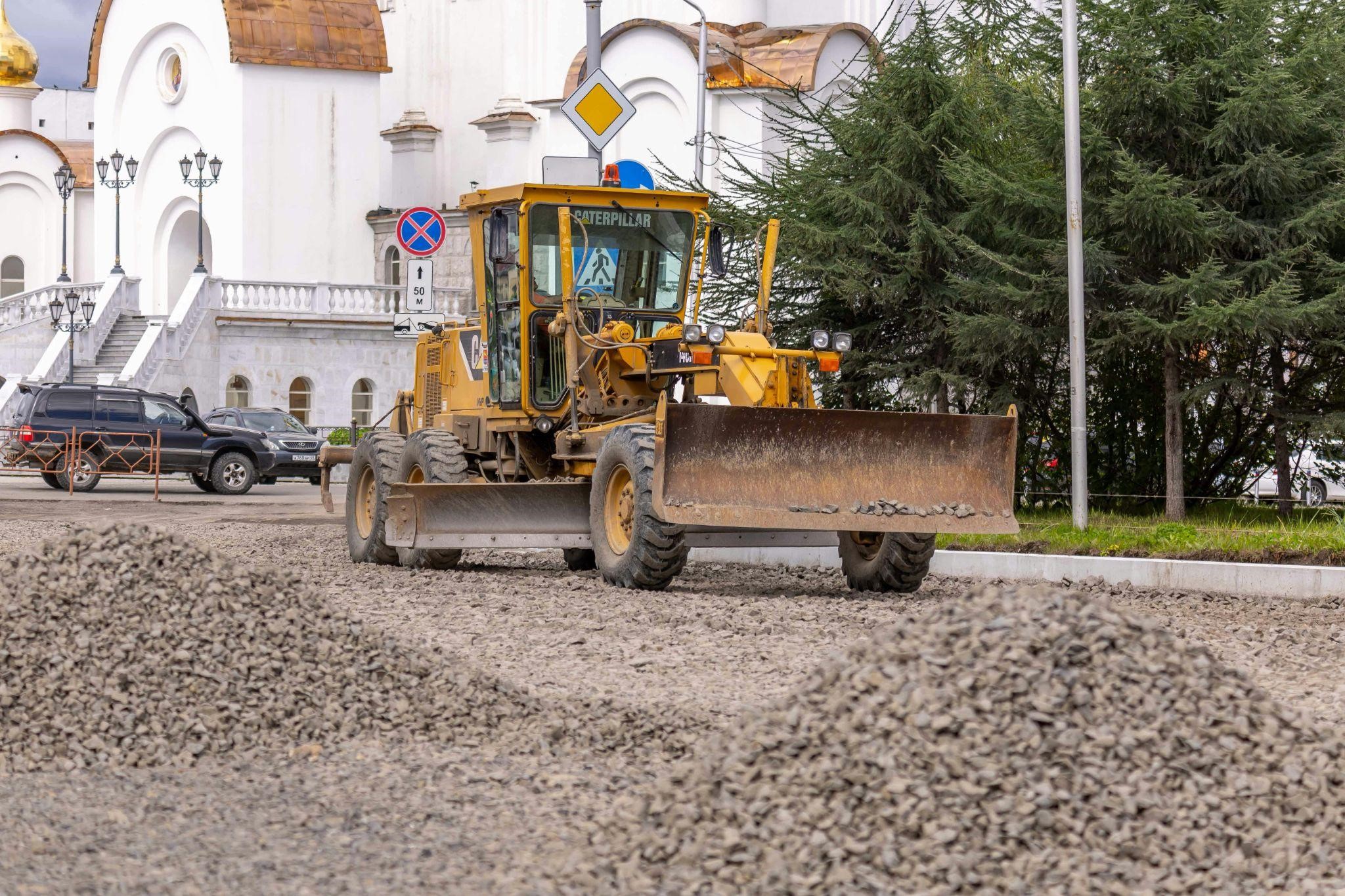Whether you’re building a new home, a commercial facility, or any other structure, the process begins with two essential steps: lot clearing and foundation preparation. These initial stages are crucial for ensuring the long-term success and stability of your project. In this comprehensive guide, we’ll discuss everything you need to know about lot clearing and foundations, along with expert advice on how to ensure a solid foundation for your build.
Understanding Lot Clearing: The First Step in Construction
Lot clearing is the process of removing trees, shrubs, rocks, and debris from a piece of land to prepare it for construction. Depending on the size and location of your build site, lot clearing may be a relatively simple process or a more complex one involving heavy equipment and skilled labor.
Key Elements of Lot Clearing
- Tree and Vegetation Removal: The most visible aspect of lot clearing involves cutting down trees and removing vegetation. This step ensures that the land is free of obstacles that could hinder construction efforts.
- Stump Grinding: After trees are cut down, their stumps need to be ground down or removed entirely to prevent them from interfering with the foundation.
- Debris Removal: Clearing the land often generates a significant amount of debris, including branches, roots, and rocks. This debris needs to be cleared away to create a clean, level surface for construction.
- Grading and Leveling: Once the land is cleared, the next step is to grade and level the site. This ensures proper water drainage and provides a stable base for the foundation.
Why Lot Clearing is Important for a Strong Foundation
Lot clearing is essential because it prepares the ground for the next critical phase—laying the foundation. Without proper clearing and grading, you run the risk of encountering issues such as soil instability, poor drainage, and uneven terrain, all of which can compromise the integrity of your structure’s foundation. Additionally, lot clearing ensures that the site meets local building codes and environmental regulations.
Preparing for Lot Clearing: What You Need to Know
Before starting the lot clearing process, there are several important considerations to keep in mind:
- Permits and Regulations: Depending on your location, you may need to obtain permits for lot clearing, especially if it involves removing trees or disturbing protected land. Professional lot clearing services can help you navigate the permitting process and ensure compliance with local regulations.
- Site Assessment: A thorough site assessment will identify potential challenges such as uneven terrain, rocky soil, or drainage issues. This assessment helps plan the most efficient and effective approach to clearing the lot.
- Environmental Impact: It’s important to consider the environmental impact of lot clearing. Whenever possible, try to minimize tree removal and preserve natural habitats. You can also replant trees or vegetation after construction is completed to restore the land.
Foundations: Building the Base of Your Structure
Once the lot has been cleared and graded, the next step is laying the foundation. The foundation is arguably the most critical part of any build, as it supports the weight of the entire structure and ensures stability for years to come. Foundations come in several types, each with its advantages and best-use scenarios.
Common Types of Foundations
- Slab Foundations: Slab foundations are a popular choice for residential homes and smaller buildings. They consist of a single layer of concrete poured directly onto the ground. Slab foundations are cost-effective, quick to install, and suitable for areas with stable soil conditions.
- Crawl Space Foundations: Crawl space foundations elevate the structure off the ground, providing space for utilities like plumbing and HVAC systems. This type of foundation is ideal for areas prone to moisture and offers easy access for maintenance and repairs.
- Basement Foundations: Basement foundations provide additional living or storage space beneath the structure. These foundations are more expensive but offer greater flexibility and usable square footage.
- Pier and Beam Foundations: Pier and beam foundations are common in areas with unstable or expansive soils. This type of foundation uses piers driven deep into the ground to support the structure, reducing the risk of shifting or settling over time.
Ensuring a Solid Foundation: Best Practices
A solid foundation is the cornerstone of any successful construction project. To ensure your foundation is built to last, there are several key best practices to follow.
1. Conduct Soil Testing and Evaluation
Before laying the foundation, it’s essential to conduct a thorough soil evaluation. Soil conditions can vary dramatically, even within a small area, and poor soil can lead to foundation issues such as settling, cracking, or shifting. A soil test will determine the composition, moisture content, and stability of the soil, allowing you to choose the appropriate foundation type.
2. Proper Drainage Planning
Water is one of the most common threats to a foundation’s integrity. Proper drainage planning ensures that water is directed away from the foundation, preventing issues such as erosion, flooding, and water infiltration. Grading the land to slope away from the structure, installing drainage pipes, and using moisture barriers are all effective ways to protect your foundation from water damage.
3. Use High-Quality Materials
The quality of the materials used in your foundation directly impacts its strength and durability. Concrete is the most common material used for foundations, but not all concrete is created equal. Ensure that your contractor uses high-quality concrete with the appropriate mix of cement, sand, gravel, and water. Additionally, reinforcing the concrete with steel rebar or mesh adds extra strength and helps prevent cracking over time.
4. Follow Local Building Codes
Building codes exist for a reason—they ensure that structures are built safely and in compliance with local regulations. It’s important to work with a contractor who is familiar with the building codes in your area and follows them meticulously when laying the foundation. This includes adhering to minimum depth requirements, proper reinforcement, and ensuring that the foundation is level and secure.
5. Allow for Proper Curing Time
Concrete foundations need time to cure properly. Rushing the curing process can lead to weak spots in the foundation, which can compromise the entire structure. It’s essential to allow the concrete to cure for the recommended period, typically between seven and 28 days, depending on the weather conditions and the size of the foundation.
Common Foundation Problems and How to Avoid Them
Even with careful planning and execution, foundation problems can still arise. Here are some common issues and how to avoid them:
- Cracks in the Foundation: Cracks can develop due to settling, shifting soil, or poor drainage. To avoid cracks, ensure the soil is properly compacted before pouring the foundation, use quality materials, and implement effective drainage solutions.
- Water Damage: Water can seep into the foundation, causing it to weaken over time. Installing a moisture barrier and ensuring proper grading around the foundation are critical steps to preventing water damage.
- Shifting or Settling: Foundations can shift or settle due to unstable soil conditions. Soil testing and choosing the right foundation type can help mitigate this issue. In areas with expansive soils, pier and beam foundations may be the best option to prevent shifting.
How Lot Clearing and Foundation Services Work Together
Lot clearing and foundation services are interconnected, and both play a vital role in the success of your construction project. Proper lot clearing ensures that the site is free of obstacles and ready for the foundation to be laid. Grading and leveling during the lot clearing process also help create a stable surface, reducing the risk of foundation problems down the line.
Additionally, both services must take into account the site’s drainage and soil conditions. Water that isn’t properly diverted away from the lot can lead to erosion and water damage, which can compromise the foundation. Similarly, poor soil conditions identified during the lot clearing phase must be addressed before the foundation is laid.
Choosing the Right Lot Clearing and Foundation Contractor
The success of your construction project hinges on choosing the right contractor for both lot clearing and foundation services. Here are some tips for making the right choice:
Experience and Expertise
Look for contractors with experience in lot clearing and foundation services, especially for projects similar to yours. An experienced contractor will have the skills and knowledge to handle any challenges that arise during the process.
Licensing and Insurance
Ensure that the contractor is properly licensed and insured to perform the work. This protects you in case of accidents or property damage and ensures that the contractor adheres to local regulations and building codes.
References and Reviews
Ask for references from previous clients and check online reviews to gauge the contractor’s reputation. A contractor with a history of successful projects and satisfied clients is more likely to deliver high-quality work.
Clear Communication
Communication is key to a successful project. Choose a contractor who is transparent about their process, timelines, and costs. Regular updates and open communication will help ensure that the project stays on track and any potential issues are addressed promptly.
Final Thoughts: Laying the Groundwork for Success
Lot clearing and foundation services are critical components of any construction project. By carefully clearing and preparing the land and ensuring that the foundation is strong and secure, you set the stage for a successful build that will stand the test of time.
Remember, it’s essential to work with experienced professionals who understand the intricacies of lot clearing and foundation construction. From soil testing and drainage planning to using high-quality materials and adhering to local building codes, every step of the process plays a role in ensuring a solid foundation for your build. With the right team in place, you can move forward confidently, knowing that your project is built on a strong and stable base.




